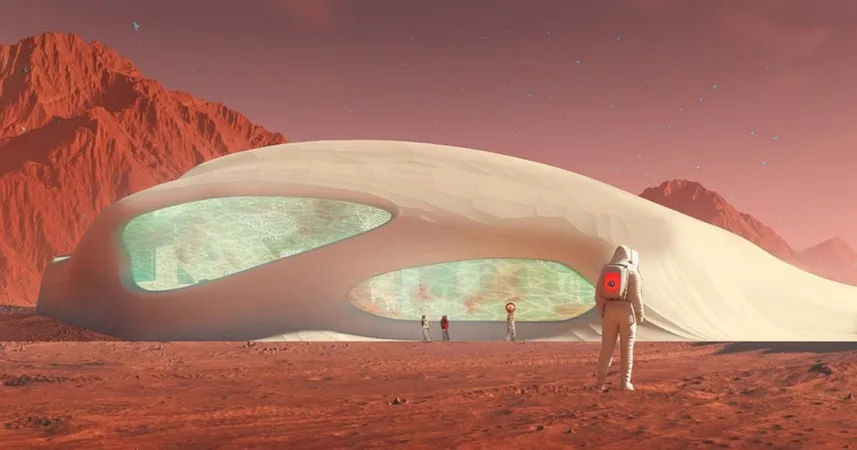
NASA's Futuristic Plans: Building Moon Homes from Mushrooms!
2024-10-06
Imagine living in a house made entirely of mushrooms—the idea isn't as far-fetched as it sounds!
NASA is making considerable strides towards creating sustainable living structures for future lunar colonies, and they are turning to fungi as a potential building material. According to reports from Al Jazeera, the space agency has allocated a staggering $2 million to a research group at NASA's Ames Research Center to explore the groundbreaking concept of "mycotecture."
Why Mushrooms?
The choice to utilize fungi stems from the astronomical costs associated with transporting traditional construction materials into space. Chris Maurer, an architect from Cleveland, Ohio, collaborating with NASA, emphasized how mixing fungal spores with lunar resources like water and regolith could drastically cut costs. This revolutionary method may pave the way for a new era of affordable construction in extraterrestrial environments.
Promising research suggests that mushroom-based building blocks possess remarkable qualities—deflecting harmful space radiation, providing insulation against extreme temperatures, and growing rapidly in just one to two months. These characteristics make them not only a cost-effective option but also an environmentally friendly alternative to conventional materials.
How Would It Work?
The vision for establishing mushroom homes on the Moon involves a unique package that would land on the lunar surface, outfitted with essential household items like sinks. Upon landing, this package would inflate, creating a space where a mixture of fungal spores, water, and algae can thrive, ultimately forming a durable shell that could serve as a habitable structure.
Despite the excitement surrounding these early experiments on Earth, challenges could arise in the harsh conditions of space. Lynn Rothschild, a senior research scientist at NASA Ames, leads the team investigating these possibilities. A concept model of these mycotecture structures is set for launch during the upcoming 2028 mission to send a commercial space station, named Starlab, into orbit.
Facing the Unknown
As Rothschild indicates, the project is not without its risks. Key questions linger over the structural integrity and insulation properties of the mushroom buildings, but if successful, the implications are enormous. Future lunar and Martian colonies could begin to materialize, perhaps proliferating as rapidly as mushrooms do after a rain shower.
The Bigger Picture
As NASA pushes the boundaries of science and engineering, this mycotecture initiative represents a leap into a sustainable future not only for space exploration but also for environmental awareness on Earth. It calls into question how we can leverage natural materials in innovative ways, potentially revolutionizing not just how we build in space but how we approach construction back home.
Stay tuned—if this project takes off, our cosmic backyard may soon resemble a fungal forest, complete with homes ready for human habitation!









 Brasil (PT)
Brasil (PT)
 Canada (EN)
Canada (EN)
 Chile (ES)
Chile (ES)
 España (ES)
España (ES)
 France (FR)
France (FR)
 Hong Kong (EN)
Hong Kong (EN)
 Italia (IT)
Italia (IT)
 日本 (JA)
日本 (JA)
 Magyarország (HU)
Magyarország (HU)
 Norge (NO)
Norge (NO)
 Polska (PL)
Polska (PL)
 Schweiz (DE)
Schweiz (DE)
 Singapore (EN)
Singapore (EN)
 Sverige (SV)
Sverige (SV)
 Suomi (FI)
Suomi (FI)
 Türkiye (TR)
Türkiye (TR)